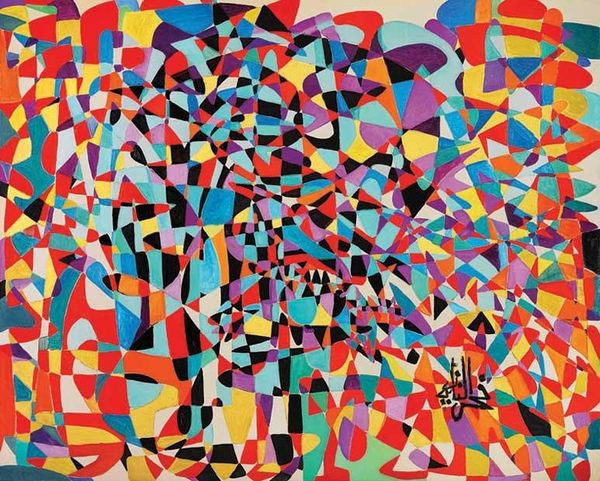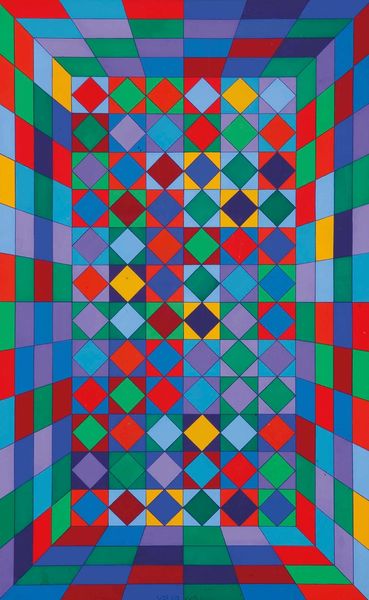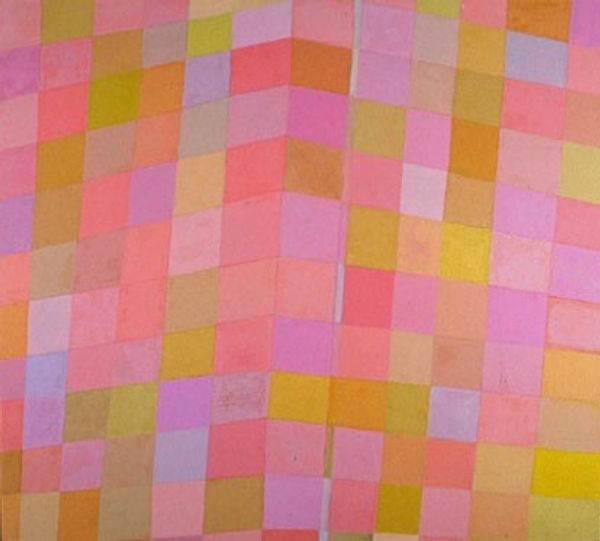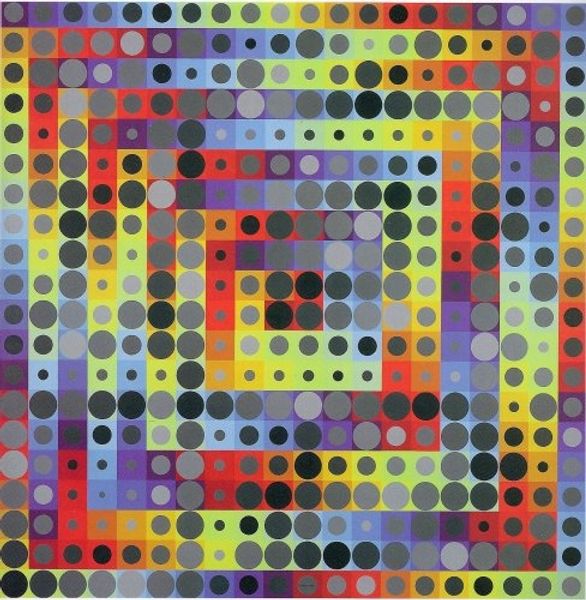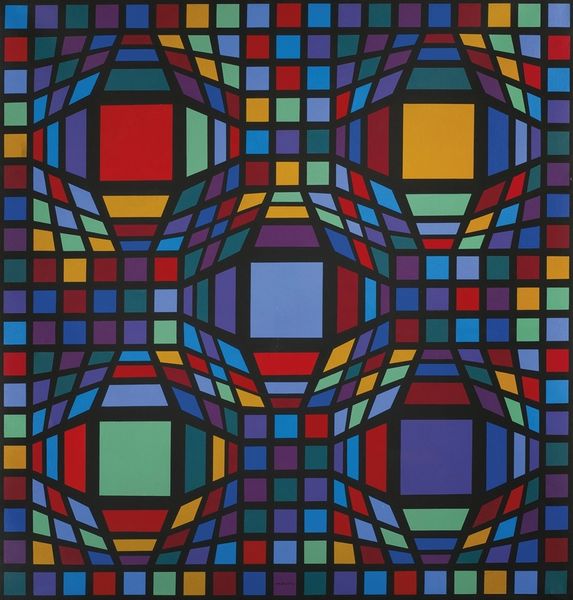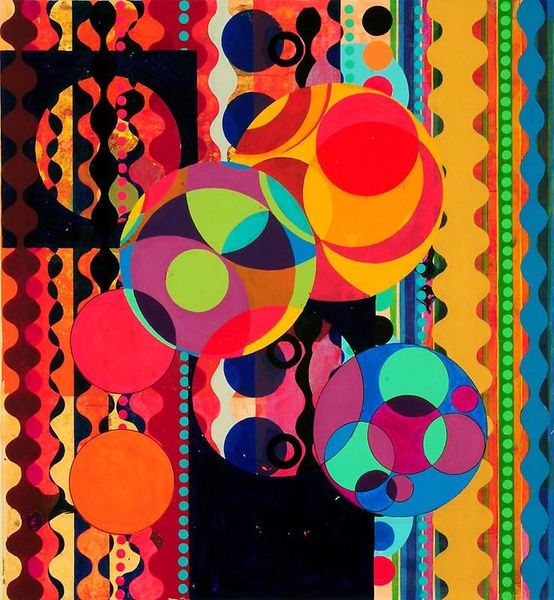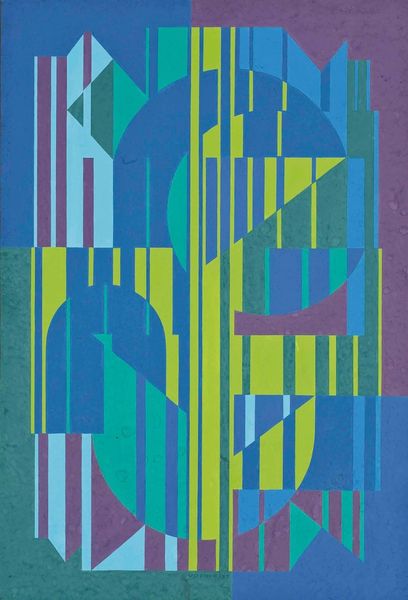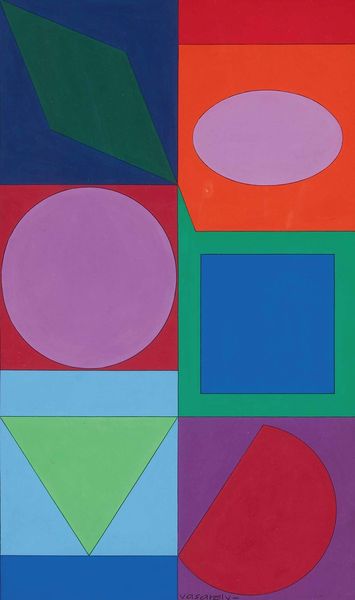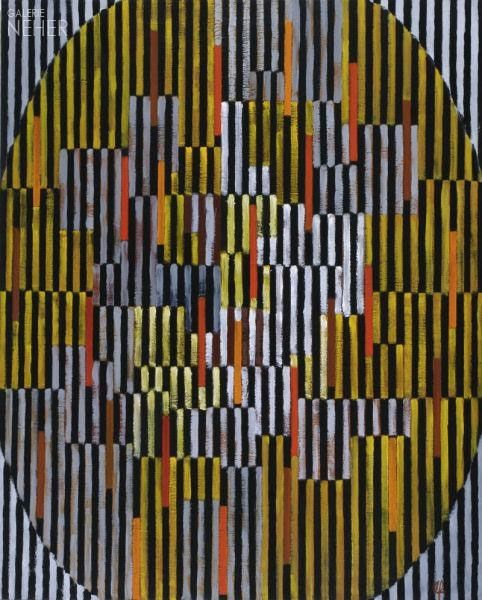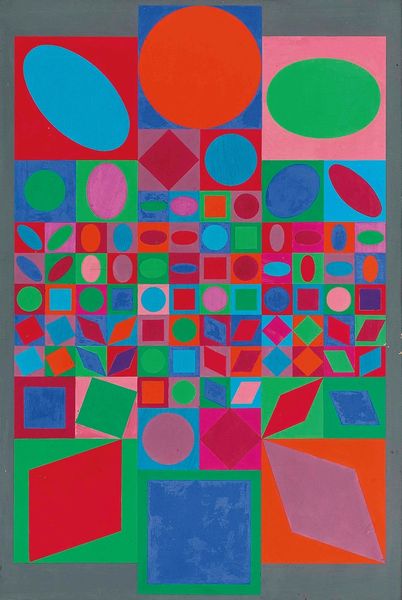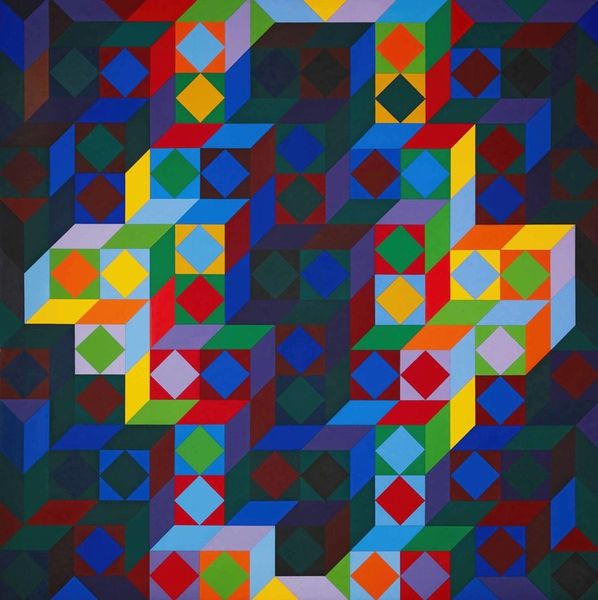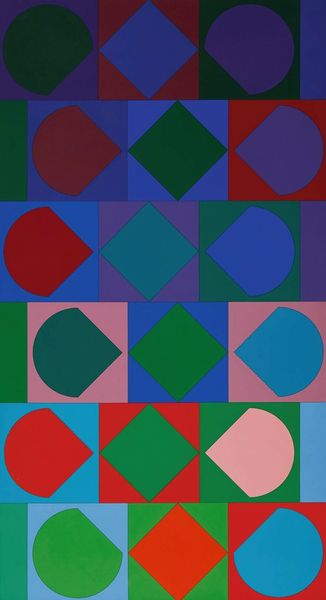
acrylic-paint
#
op-art
#
acrylic-paint
#
geometric pattern
#
geometric
#
abstraction
#
modernism
Dimensions: 119 x 76 cm
Copyright: Victor Vasarely,Fair Use
Curator: Well, hello there. Let's gather round Victor Vasarely’s "Harlequin" from 1936. It’s painted using acrylic. Tell me, what strikes you first about it? Editor: Woah, this shimmies and sways! It’s like a checkerboard had a wild night out. The colors, all those blues, greens, and oranges, they make my eyes dance! It has a somewhat hallucinatory effect... I imagine that this "Harlequin" is an incredibly playful artwork to have around you. Curator: Yes, playful is a great word for it! Vasarely really pioneered Op Art, and this piece exemplifies how he manipulated geometric shapes to create optical illusions. Look closely; do you see the suggestion of a human figure emerging from the grid? It’s not explicitly there, but we intuitively piece it together. In essence, the title clearly alludes to that presence, which is culturally and socially relevant given the rise of theater and visual performance at the time this piece was created. Editor: Absolutely! The way he distorts that grid—it gives a sense of depth and movement, like the harlequin is caught mid-leap. You know, it’s funny, but these grids have, for me, an almost unsettling feel. There is something about order being bent to the service of representation that is, strangely, quite chaotic. Curator: That's a wonderful observation! And Vasarely wasn’t simply playing with visual trickery. Consider how abstract art served as a language in itself to navigate or evade, say, restrictive social commentary that more concrete representation would evoke. Editor: So, in essence, a subversive act concealed within a playful visual puzzle? Curator: Precisely. The harlequin figure itself, historically a symbol of sly wit and social commentary, gets a modern update here. It becomes this shimmering, almost ghostly presence embedded within the very fabric of the image, the larger culture, in a way. Editor: I get that. It really makes you question how much of what we see is actually there and how much is constructed by our own brains. Sort of a visual reminder that perception itself is a performance. Curator: Beautifully said! Ultimately, "Harlequin" encourages us to not just see but to actively engage with how we are seeing, and to understand how external events influence our experiences. It has certainly made me reflect about my role and vision of art history. Editor: And me! I was prepared for squares but I have experienced art subverting my expectations through the guise of geometry, a perfect jester's trick. Thanks, "Harlequin".
Comments
No comments
Be the first to comment and join the conversation on the ultimate creative platform.
